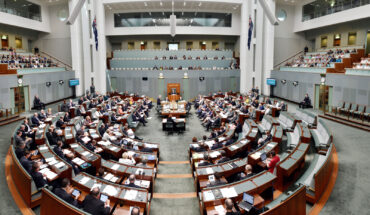Foreign Direct Investment (FDI) is synonymous with the ownership, management, and control of a business entity by a foreign enterprise. On the positive note, FDI is encouraged especially in green field projects, i.e., new projects, as it is expected to bring benefits such as employment generation, creation of manufacturing capabilities, introduction of new techniques and technologies, etc. On the flip side, there are fears and concerns such as domination of multinational corporations (MNCs), entry barriers for new companies, etc. In pharmaceutical sector, there are certain specific concerns attached to FDI such as sale of high priced patented drugs and branded generics instead of low-cost essential drugs by pharma MNCs, elimination of competition from generic players due to acquisition of domestic pharma firms by MNCs, to name a few.
Recent report of the United Nations Conference on Trade and Development (UNCTAD) points out that India emerging as a favourite destination for foreign investors as India has been ranked among the top five countries for greenfield projects. India has been ranked 3rd with 1,008 greenfield investment announcements. The U.S. tops the list with 2,075 greenfield investment announcements followed by U.K. with 1,230 such projects. Majority of FDI flow in India is from five countries namely Singapore (23.2%), Mauritius (22.0%), the U.S. (8.8%), Japan (8.5%), and United Arab Emirates (7.6%) in FY2023-24 (till January 2024). Predominantly, FDI is in sectors such as Services (16.2%), Construction (infrastructure) activities (12.0%), Computer S/W & H/W (10.7%), Trading (8.3%), and Automobile Industry (2.8%) for this period. The Reserve Bank of India (RBI) data for the rolling 12-month period ending January 2024 put the net inflows at $18.4 billion.
Deng Xiaoping, Chinese leader famously said that ‘it does not matter whether a cat is black or white, as long as it catches mice’. But while applying this to FDI in pharmaceutical sector in India vis-à-vis domestic capital, it requires caution even though capital serves the same purpose. The Parliamentary Standing Committee on Commerce chaired by Shanta Kumar in 110th Report on FDI in Pharmaceutical Sector (2013, August) had noted that out of 67 FDI investments till September, 2011, only one has been in the green field and all the remaining FDI had come in brown field projects, i.e. acquisition of existing companies. This showed the predominance of brown field investments for merger or takeover of domestic pharmaceutical companies. The Committee had also noted that data captured by the RBI on FDI equity inflows, had not made distinction between Greenfield and brownfield investments. Observations of the Committee were very pertinent in the background that since 2006, seven Indian companies namely Dabur Pharma, Ranbaxy Labs, Matrix Labs, Paras Pharma, Piramal Healthcare, Shanta Biotech, and Orchid Chemicals, were taken over by MNCs. In Indian context, there is scepticism regarding foreign capital as it is always equated with the rise of the East India Company from Traders to Rulers.
FDI in Indian pharmaceutical sector has seen many twists and turns in last seven and a half decades. In 1947, Western pharma MNCs had control over 80-90% of pharmaceutical market in India. At that time, almost 99 per cent of all pharmaceutical products under patents in India were held by foreign companies(U.S. International Trade Commission, 2007). By 1960s, eight out of top 10 pharmaceutical firms in India as per sales, were subsidiaries of MNCs. Foreign Exchange Regulation Act (FERA), 1973 along with the Patents Act, 1970, and DPCO, 1970 completely changed the landscape of pharmaceutical sector in India. Through FERA, restrictions were imposed on the companies in which the non-resident interest was more than 40 per cent. T. N. Ninan et al. (1982) pointed out that out of about 900 foreign equity companies in India, over 400 were unaffected by the FERA, and of the rest, close to 100 were asked to leave. 230 companies were asked to reduce foreign equity down to 40 per cent, 22 companies chose voluntarily to reduce the holding to 40 per cent. 114 companies were allowed to keep foreign holdings in the range of 51 per cent 74 per cent. Owing to introduction of the FERA that required all MNCs to dilute their equity holding, the market share of MNCs declined during 1970-79. Pharmaceutical sector was also not an exception.
Certain prominent pharma MNCs had presence in India even prior to FERA, 1973 such as GlaxoSmithKline Pharmaceuticals Limited incorporated in 1924, Abbott India (1944), Novartis India Limited (1947), Sanofi India Limited (1956) (Initially, formed as Hoechst Fedco Pharma Private Limited, and then name was changed from time to time), Pfizer Limited (incorporated in 1956 and listed on the BSE in 1966), Procter and Gamble Hygiene & Health Care which was set up in India as one of Merck’s Asian subsidiaries in 1967 to name a few. The FERA in 1973 made a distinction between FERA companies and non-FERA companies based on equity shareholding of MNCs in the companies. Besides this, in 1978, India launched its first Drug Policy which included compulsory provisions, such as ratio parameter, the supply of bulk drugs to non-associated formulators, etc. This made it obligatory for all pharmaceutical companies to produce bulk drugs from the basic stage. Collectively, this affected the market share of pharma MNCs in India.
In 1991, the drugs and pharmaceutical sector was opened to the FDI by permitting FDI/Foreign Equity, up to 51 per cent, under the automatic approval route. The Foreign Exchange Management Act, 1999 replaced the FERA, and the provisions of the FEMA opened a window of opportunity again for FDI in the domestic pharmaceutical industry. In 2000, FDI was permitted up to 74 per cent under the automatic route. This was in alignment with the 1994 Drug Policy. In 2001, up to 100 per cent FDI was permitted in the pharmaceutical sector in respect of drugs which did not attract Compulsory Licensing (CL) or involved use of recombinant DNA technology and specific cell/tissue targeted formulations. From September 23, 2005 the FDI was permitted under automatic route, and drug manufacturing was also freed from licensing. By 2004-05, market share of foreign pharmaceutical companies in the list of top ten pharmaceutical companies in India was 10.5 per cent which rose to about 19% in 2010-11.
In September 2011, High Level Committee Report on FDI in Existing Indian Pharmaceutical Companies (Arun Maira Committee) concluded that green field investments must be attracted. There was unanimity among members of the Committee that there should be monitoring and control of acquisitions to ensure that the structure of the pharmaceutical market is not distorted in a way that will be detrimental to the interests of Indian consumers. The Ministry of Health & Family Welfare had expressed concern that 28 per cent of the Indian pharmaceutical market was controlled by pharma MNCs at that time. Based on the recommendations of Arun Maira Committee, the FDI policy was revised and notified by the Department of Industrial Policy & Promotion (DIPP) (DIPP was renamed as the Department for Promotion of Industry and Internal Trade (DPIIT) in January 2019) vide Press Note 3 of 2011, and in all cases of FDI, up to 100% for investments in existing companies, i.e., brownfield investments, in the pharmaceutical sector, and approval from the Foreign Investment Promotion Board (FIPB) was required.
In June 2016, up to 74 per cent FDI was permitted under automatic route in brownfield investments, and beyond 74 per cent under government approval route. It was done due to concerns raised regarding accessibility, and the growth of generic pharmaceutical industry in India. Between April 2012 and April 2013, more than 96 per cent of the total FDI in pharmaceutical sector was in brownfield projects. It deserves attention in the background that 100 per cent FDI was already permitted under automatic route for Greenfield pharmaceutical projects. Through the Union Budget of 2017, the Foreign Investment Promotion Board (FIPB) was abolished as more than 90 per cent of the FDI used to come through the automatic route. The responsibility of examining FDI proposals under Government approval route was entrusted to the concerned administrative Ministries/Departments. The role of the Competition Commission of India (CCI) in specified cases has become critical.
FDI in pharmaceutical sector stood at Rs. 9,052 Crore in 2014-15 but declined in 2015-16 to Rs. 4,975 Crore. FDI went up again in 2016-17 to Rs. 5,723 and Rs. 6,502 Crore in 2017-18. Significant decline was observed in 2018-19 with FDI of Rs. 1,842 Crore. From 2018-19 to 2022-23, total FDI inflows in the pharmaceutical sector have been Rs. 43,713 Crore. Pharmaceutical Sector has witnessed 58% growth in FDI in FY2021-22 alone. During FY2023-24, from April 2023 to September 2023, FDI inflows in pharmaceutical sector have been Rs. 4,456 Crore. And from April 1, 2023 to November 30, 2023, six FDI proposals worth Rs. 9,848 Crore have been approved for brownfield projects. Schemes such as Production-Linked Incentive (PLI) Scheme for domestic manufacturing of critical Key Starting Materials, Drug Intermediates and APIs, Scheme for Promotion of Bulk Drug Parks are likely to attract foreign investors, and make India a preferred destination for FDI.
Dr. Anil Kumar Angrish, Associate Professor (Finance and Accounting),
Department of Pharmaceutical Management-NIPER, SAS Nagar (Mohali), Punjab
Disclaimer: – Views are personal and do not represent the views of the Institute.






